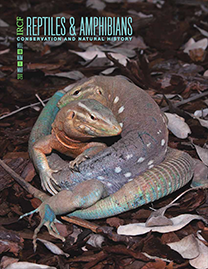Sympatry between Two Wide-ranging Salamander Species
DOI:
https://doi.org/10.17161/randa.v18i1.16141Abstract
Understanding how closely related species coexist remains a central problem in community ecology. Habitat characteristics, presence of predators and competitors, and frequency of disturbance all affect the geographic distribution of a species. Plethodon cinereus and P. electromorphus are two closely related and ecologically similar species that have a large geographic overlap in their distributions. In this study, I had two main goals. First, I wanted to determine how commonly sympatric locations occurred between these two species. To address this goal, I conducted landscape-scale surveys in areas that should contain sympatric locations based on their distributions. My second goal was to determine if the relative number of individuals of each species within sympatric locations was stable over time by monitoring four sympatric locations over three years. In addition, flooding occurred during one year of the study, impacting two of the four monitored sympatric locations; therefore, I wanted to examine whether this disturbance affected the salamander populations at those locations. This flooding event provided a rare opportunity to study the impact of flooding on terrestrial salamanders, a topic about which little is known. I found that sympatric locations occurred less frequently than expected by chance and that some sympatric sites seem to be relatively stable while at others, the relative population size of P. cinereus was increasing — and that this shift might be positively affected by flooding. While this study demonstrated that P. cinereus and P. electromorphus do not occur in sympatry as frequently as expected by chance, the cause for this result is unknown. The most likely factor is that the two species exhibit subtle habitat differences that have not yet been demonstrated. The interactions between P. cinereus and P. electromorphus are complex, and the patterns observed here could have been generated by any number of mechanisms. Further research on this system could clarify some of these remaining questions.
Downloads
Published
Issue
Section
License

This work is licensed under a Creative Commons Attribution-NonCommercial 4.0 International License.
Copyright is held by the authors. Articles in R&A are made available under a Creative Commons Attribution-NonCommercial 4.0 International license.

